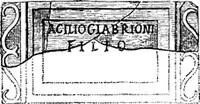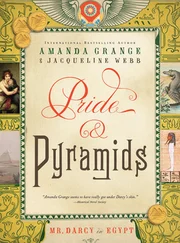Rodolfo Amedeo Lanciani - Pagan and Christian Rome
Здесь есть возможность читать онлайн «Rodolfo Amedeo Lanciani - Pagan and Christian Rome» — ознакомительный отрывок электронной книги совершенно бесплатно, а после прочтения отрывка купить полную версию. В некоторых случаях можно слушать аудио, скачать через торрент в формате fb2 и присутствует краткое содержание. Жанр: foreign_edu, История, История, на английском языке. Описание произведения, (предисловие) а так же отзывы посетителей доступны на портале библиотеки ЛибКат.
- Название:Pagan and Christian Rome
- Автор:
- Жанр:
- Год:неизвестен
- ISBN:нет данных
- Рейтинг книги:3 / 5. Голосов: 1
-
Избранное:Добавить в избранное
- Отзывы:
-
Ваша оценка:
- 60
- 1
- 2
- 3
- 4
- 5
Pagan and Christian Rome: краткое содержание, описание и аннотация
Предлагаем к чтению аннотацию, описание, краткое содержание или предисловие (зависит от того, что написал сам автор книги «Pagan and Christian Rome»). Если вы не нашли необходимую информацию о книге — напишите в комментариях, мы постараемся отыскать её.
Pagan and Christian Rome — читать онлайн ознакомительный отрывок
Ниже представлен текст книги, разбитый по страницам. Система сохранения места последней прочитанной страницы, позволяет с удобством читать онлайн бесплатно книгу «Pagan and Christian Rome», без необходимости каждый раз заново искать на чём Вы остановились. Поставьте закладку, и сможете в любой момент перейти на страницу, на которой закончили чтение.
Интервал:
Закладка:
Rodolfo Amedeo Lanciani
Pagan and Christian Rome
CHAPTER I.
THE TRANSFORMATION OF ROME FROM A PAGAN INTO A CHRISTIAN CITY. 1 1 The relations between the Empire, the Christians, and the Jews have been discussed by really numberless writers, beginning with the Fathers of the Church. I have consulted, among the moderns: Mangold: De ecclesia primæva pro cæsaribus et magistratibus romanis preces fundente. Bonn, 1881.—Bittner: De Græcorum et Romanorum deque Judæorum et christianorum sacris jejuniis. Posen, 1846.—Weiss: Die römischen Kaiser in ihrem Verhältnisse zu Juden und Christen. Wien, 1882.—Mourant Brock: Rome, Pagan and Papal. London, Hodder & Co. 1883.—Backhouse and Taylor: History of the primitive Church. (Italian edition.) Rome, Loescher, 1890.—Greppo: Trois mémoires relatifs à l'histoire ecclésiastique. —Döllinger: Christenthum und Kirche. —Champagny (Comte de): Les Antonins , vol. i.—Gaston Boissier: La fin du paganisme , etc., 2 vols. Paris, Hachette, 1891.—Giovanni Marangoni: Delle cose gentilesche trasportate ad uso delle chiese. Roma, Pagliarini, 1744.—Mosheim: De rebus Christianis ante Constantinum. —Carlo Fea: Dissertazione sulle rovine di Roma , in Winckelmann's Storia delle arti. Roma, Pagliarini, 1783, vol. iii.—Louis Duchesne: Le liber pontificalis. Paris, Thorin, 1886-1892.—G.B. de Rossi: Bullettino di archeologia cristiana. Roma, Salviucci, 1863-1891.
The early adoption of Christianity not confined to the poorer classes.—Instances of Roman nobles who were Christians.—The family of the Acilii Glabriones.—Manius Acilius the consul.—Put to death because of his religion.—Description of his tomb, recently discovered.—Other Christian patricians.—How was it possible for men in public office to serve both Christ and Cæsar?—The usual liberality of the emperors towards the new religion.—Nevertheless an open profession of faith hazardous and frequently avoided.—Marriages between Christians and pagans.—Apostasy resulting from these.—Curious discovery illustrating the attitude of Seneca's family towards Christianity.—Christians in the army.—The gradual nature of the transformation of Rome.—The significance of the inscription on the Arch of Constantine.—The readiness of the early Church to adopt pagan customs and even myths.—The curious mixture of pagan and Christian conceptions which grew out of this.—Churches became repositories for classical works of art, for which new interpretations were invented.—The desire of the early Christians to make their churches as beautiful as possible.—The substitution of Christian shrines for the old pagan altars at street corners.—Examples of both.—The bathing accommodations of the pagan temples adopted by the Church.—Also the custom of providing public standards of weights and measures.—These set up in the basilicas.—How their significance became perverted in the Dark Ages.—The adoption of funerary banquets and their degeneration.—The public store-houses of the emperors and those of the popes.—Pagan rose-festivals and their conversion into a Christian institution.
It has been contended, and many still believe, that in ancient Rome the doctrines of Christ found no proselytes, except among the lower and poorer classes of citizens. That is certainly a noble picture which represents the new faith as searching among the haunts of poverty and slavery, seeking to inspire faith, hope, and charity in their occupants; to transform them from things into human beings; to make them believe in the happiness of a future life; to alleviate their present sufferings; to redeem their children from shame and servitude; to proclaim them equal to their masters. But the gospel found its way also to the mansions of the masters, nay, even to the palace of the Cæsars. The discoveries lately made on this subject are startling, and constitute a new chapter in the history of imperial Rome. We have been used to consider early Christian history and primitive Christian art as matters of secondary importance, and hardly worthy the attention of the classical student. Thus, none of the four or five hundred volumes on the topography of ancient Rome speaks of the basilicas raised by Constantine; of the church of S. Maria Antiqua, built side by side with the Temple of Vesta, the two worships dwelling together as it were, for nearly a century; of the Christian burial-grounds; of the imperial mausoleum near S. Peter's; of the porticoes, several miles in length, which led from the centre of the city to the churches of S. Peter, S. Paul, and S. Lorenzo; of the palace of the Cæsars transformed into the residence of the Popes. Why should these constructions of monumental and historical character be expelled from the list of classical buildings? and why should we overlook the fact that many great names in the annals of the empire are those of members of the Church, especially when the knowledge of their conversion enables us to explain events that had been, up to the latest discoveries, shrouded in mystery?
It is a remarkable fact that the record of some of these events should be found, not in church annals, calendars, or itineraries, but in passages in the writings of pagan annalists and historians. Thus, in ecclesiastical documents no mention is made of the conversion of the two Domitillæ, or Flavius Clemens, or Petronilla, all of whom were relatives of the Flavian emperors; and of the Acilii Glabriones, the noblest among the noble, as Herodianus calls them (2, 3). Their fortunes and death are described only by the Roman historians and biographers of the time of Domitian. It seems that when the official feriale , or calendar, was resumed, after the end of the persecutions, preference was given to names of those confessors and martyrs whose deeds were still fresh in the memory of the living, and of necessity little attention was paid to those of the first and second centuries, whose acts either had not been written down, or had been lost during the persecutions.
As the crypt of the Acilii Glabriones on the Via Salaria has become one of the chief places of attraction, since its re-discovery in 1888, I cannot begin this volume under better auspices than by giving an account of this important event. 2 2 See de Rossi: Bullettino di archeologia cristiana , 1888-1889, p. 15; 1890, p. 97.—Edmond Le Blant: Comptes rendus de l'Acad. des Inscript. , 1888, p. 113.—Arthur Frothingham: American Journal of Archæology , June, 1888, p. 214.—R. Lanciani: Gli horti Aciliorum sul Pincio , in the Bullettino della commissione archeologica , 1891, p. 132; Underground Christian Rome , in the Atlantic Monthly , July, 1891.
In exploring that portion of the Catacombs of Priscilla which lies under the Monte delle Gioie, near the entrance from the Via Salaria, de Rossi observed that the labyrinth of the galleries converged towards an original crypt, shaped like a Greek Γ (Gamma), and decorated with frescoes. The desire of finding the name and the history of the first occupants of this noble tomb, whose memory seems to have been so dear to the faithful, led the explorers to carefully sift the earth which filled the place; and their pains were rewarded by the discovery of a fragment of a marble coffin, inscribed with the letters: ACILIO GLABRIONI FILIO.

Tablet of Acilius Glabrio.
Did this fragment really belong to the Γ crypt, or had it been thrown there by mere chance? And in case of its belonging to the crypt, was it an isolated record, or did it belong to a group of graves of the Acilii Glabriones? The queries were fully answered by later discoveries; four inscriptions, naming Manius Acilius … and his wife Priscilla, Acilius Rufinus, Acilius Quintianus, and Claudius Acilius Valerius were found among the débris, so that there is no doubt as to the ownership of the crypt, and of the chapel which opens at the end of the longer arm of the Γ.
Читать дальшеИнтервал:
Закладка:
Похожие книги на «Pagan and Christian Rome»
Представляем Вашему вниманию похожие книги на «Pagan and Christian Rome» списком для выбора. Мы отобрали схожую по названию и смыслу литературу в надежде предоставить читателям больше вариантов отыскать новые, интересные, ещё непрочитанные произведения.
Обсуждение, отзывы о книге «Pagan and Christian Rome» и просто собственные мнения читателей. Оставьте ваши комментарии, напишите, что Вы думаете о произведении, его смысле или главных героях. Укажите что конкретно понравилось, а что нет, и почему Вы так считаете.












